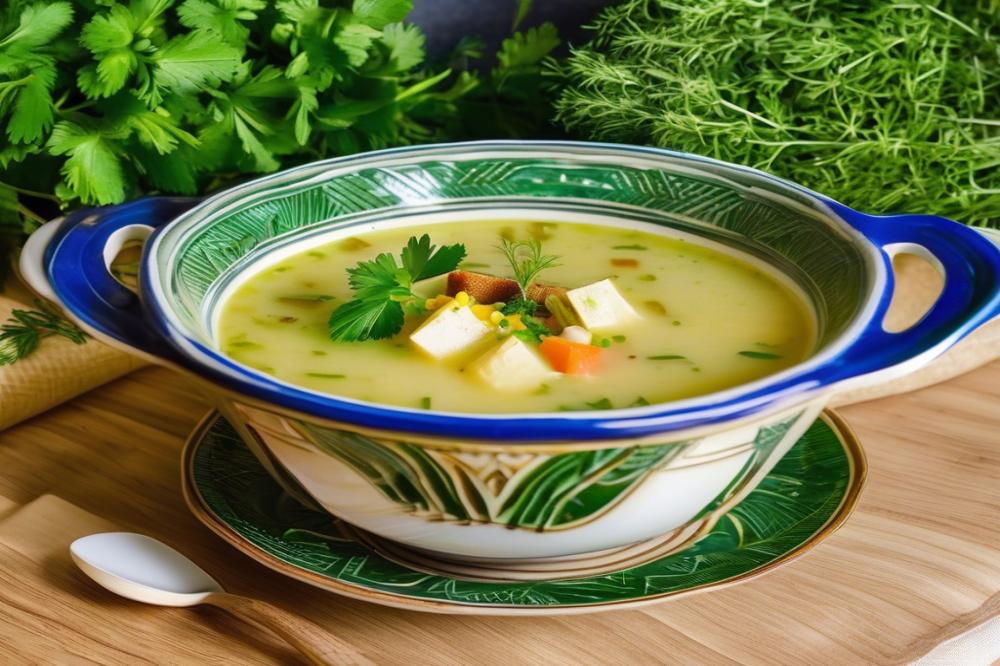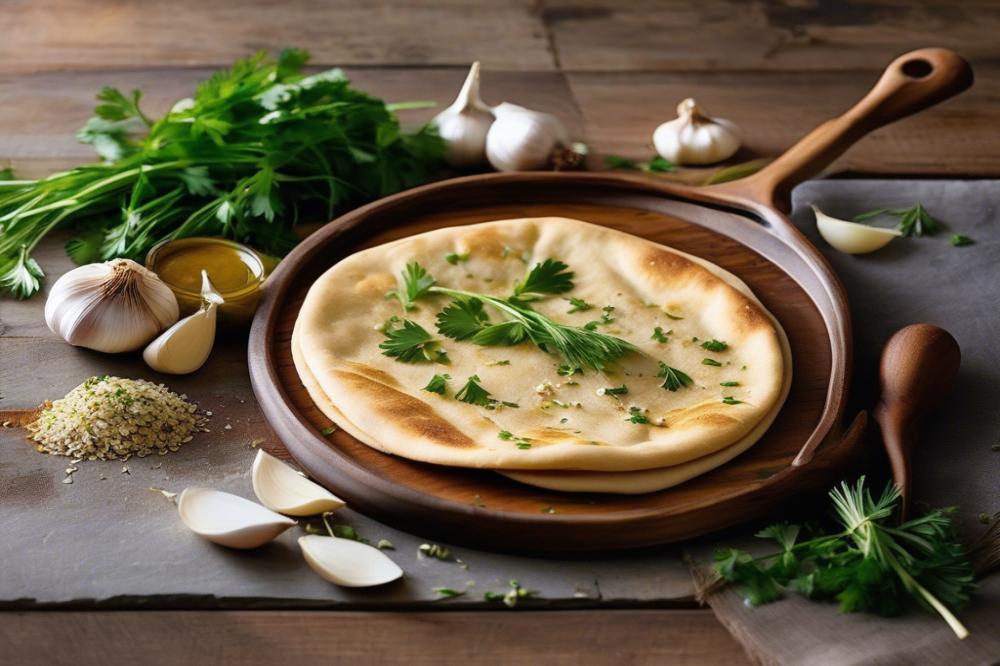Overview of Kishk Soup and Its Significance in Lebanese Cuisine
Kishk Soup is a beloved dish in Lebanese Cuisine, showcasing the rich flavors of the region. This hearty dish is not just a meal; it represents comfort and nostalgia for many families. The traditional recipe often features fermented wheat, which is a key component in its preparation. This unique ingredient gives the soup its distinct taste and thick texture, setting it apart from other soups in Middle Eastern food.
The origins of kishk can be traced back to ancient practices of food preservation. People in rural Lebanon would ferment wheat and combine it with dairy, creating a nutritious staple. Over the years, this simple method has turned into the delicious dairy soup we know today. Many families continue to prepare it with love, passing down their variations of the dish through generations.
Comfort food often evokes feelings of warmth and safety. For Lebanese people, kishk soup embodies these qualities perfectly. It is commonly enjoyed during cooler months, making it a satisfying option for many households. Often, it is paired with chickpea soup to enhance its nutritional profile. This vegetarian dish appeals to those seeking healthy recipes that don’t compromise on flavor.
Kishk soup holds a special place in the hearts of those who savor it. Whether enjoyed during a family gathering or on a quiet evening, it is a reminder of home. Much more than just a dish, it reflects the culture and resilience of the Lebanese people. Sharing this soup is a way to connect with one’s heritage and bring comfort to the table.
Understanding Kishk
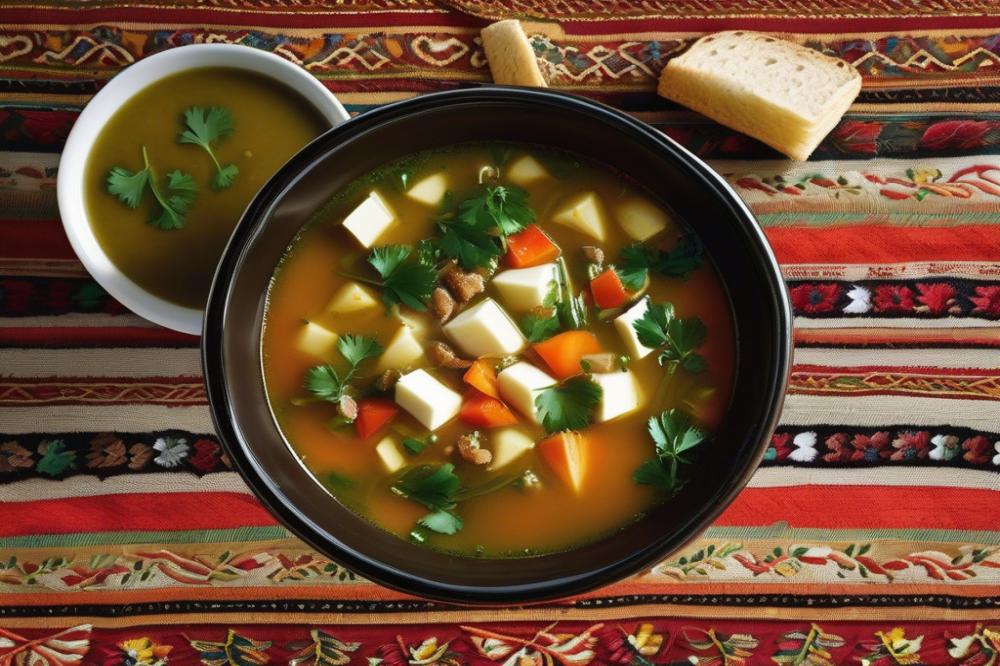
Kishk is a traditional ingredient in Lebanese and other Middle Eastern cuisines. It consists mainly of fermented wheat and yogurt. This unique combination creates a flavorful base for various dishes, particularly soups.
Fermented wheat is crucial in kishk preparation. It undergoes a natural fermentation process that enhances its flavor. During this process, wheat is soaked, dried, and mixed with yogurt. As it ferments, the mixture develops a tangy taste that adds depth to the soup. The fermentation also breaks down the wheat, making it easier to digest. Additionally, this fermentation process contributes to the health benefits often associated with yogurt and other dairy products.
Kishk serves as a central component in many healthy recipes, including vegetarian dishes. It offers a hearty consistency and rich flavor that complements other ingredients well. Many people enjoy it as a comforting dairy soup, particularly during colder months.
As a staple food, kishk shares its roots with various Middle Eastern foods. Some people may compare it to chickpea soup, as both are beloved for their nutritional value. The distinct flavors of kishk connect it to other regional delights. This relationship showcases the common practices of fermentation and grain usage in Middle Eastern culinary traditions.
In summary, understanding kishk is essential for appreciating its place in Lebanese culture. This fermented wheat product not only provides unique flavors but also highlights the ingenuity behind traditional recipes.
Ingredients and Cooking Instructions
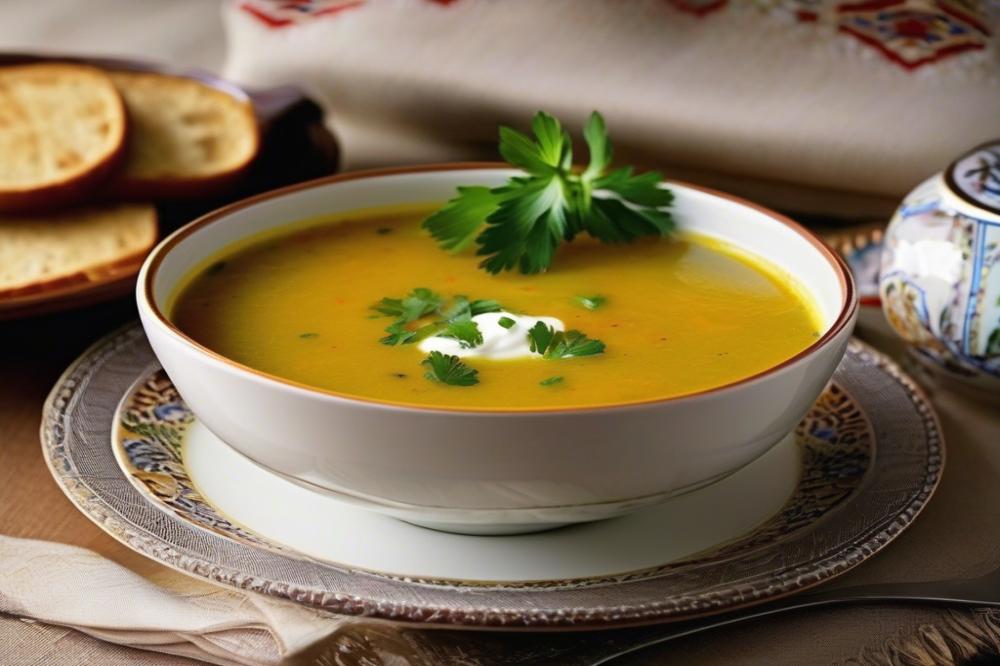
To create a delicious bowl of traditional Lebanese kishk soup, you will need a few simple ingredients. Here’s the list with the necessary amounts:
- 1 cup fermented wheat (kishk)
- 1 cup chickpeas (soaked overnight)
- 1 large onion (finely chopped)
- 3 tablespoons olive oil
- 1 teaspoon salt
- 1 teaspoon ground cumin
- 6 cups water
- Fresh parsley for garnish
Cooking the soup is an enjoyable process with clear steps. Start by heating the olive oil in a pot. Sauté the chopped onion until it becomes translucent. This basic action adds a wonderful aroma to your kitchen.
Add the soaked chickpeas and the water into the pot. It is crucial to bring this mixture to a boil. Once boiling, reduce the heat and let it simmer until the chickpeas are tender. This usually takes about 30 minutes.
Once the chickpeas are soft, gradually stir in the fermented wheat. It’s important to keep stirring to avoid any lumps in the soup during the kishk preparation. The mixture should become thick and creamy.
Season the soup with salt and cumin to enhance its flavor. Allow it to simmer for a little longer so the spices blend well. This step adds depth to your dish.
When finished, serve the soup hot. Garnish with freshly chopped parsley for a touch of color and freshness. Everyone will appreciate this comforting vegetarian dish.
Nutritional Information
This Lebanese soup is not only delicious but also nutritious. It is rich in protein thanks to chickpeas, making it an excellent choice for those seeking healthy recipes. Additionally, the fermented wheat provides dietary fiber, which aids digestion.
The blend of ingredients offers a variety of vitamins and minerals. Overall, kishk soup is a wholesome meal that fits well into a balanced diet. As a popular choice in Middle Eastern food, it’s perfect for anyone looking for comfort food that nourishes the body and soul.
Variations of Kishk Soup
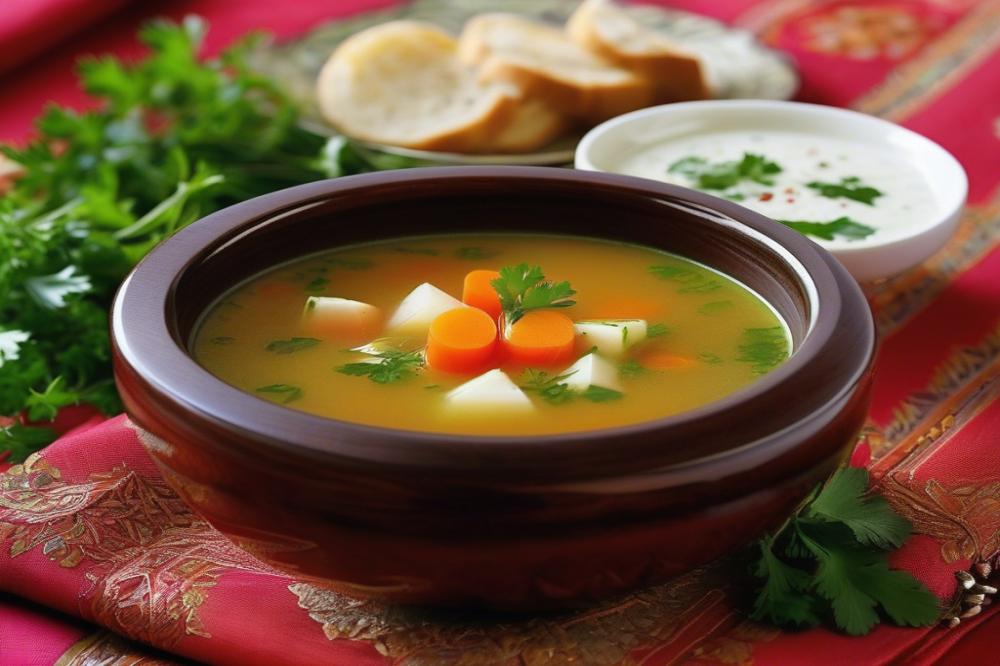
Many regions within Lebanon boast their styles of this delicious dairy soup. The tradition of kishk preparation is passed down through generations, each adding their twist to the base recipe. In some areas, households turn to regional ingredients that elevate the flavor.
For instance, in the Bekaa Valley, locals often incorporate potatoes into their traditional soup. This hearty addition enhances the texture and adds a creamy consistency. Another popular variation includes colorful bell peppers or vibrant greens like spinach, which bring in bursts of color and nutrients.
Exploring the flavors of neighboring countries also reveals interesting takes on this beloved dish. In Syria, for example, a chickpea soup version is popular. Chickpeas not only add protein but also create a satisfying vegetarian dish that appeals to many.
The use of fermented wheat is a common thread across many Middle Eastern food traditions. Variants of this rich soup may experiment with other grains as well. Some cooks might opt for barley or even rice, lending different textures and tastes to the final bowl.
Additionally, herbs and spices play a significant role in creating diverse flavors. In some households, a hint of mint or a pinch of cinnamon adds warmth. These subtle shifts can completely transform your typical healthy recipes into unexpected delights.
Comfort food relies heavily on personal touch. Each family can adapt their concoction based on available ingredients or family preferences. This uniqueness not only honors tradition but also invites creativity. It’s a nourishing dish that can evoke memories and togetherness around the dining table.
Serving Suggestions
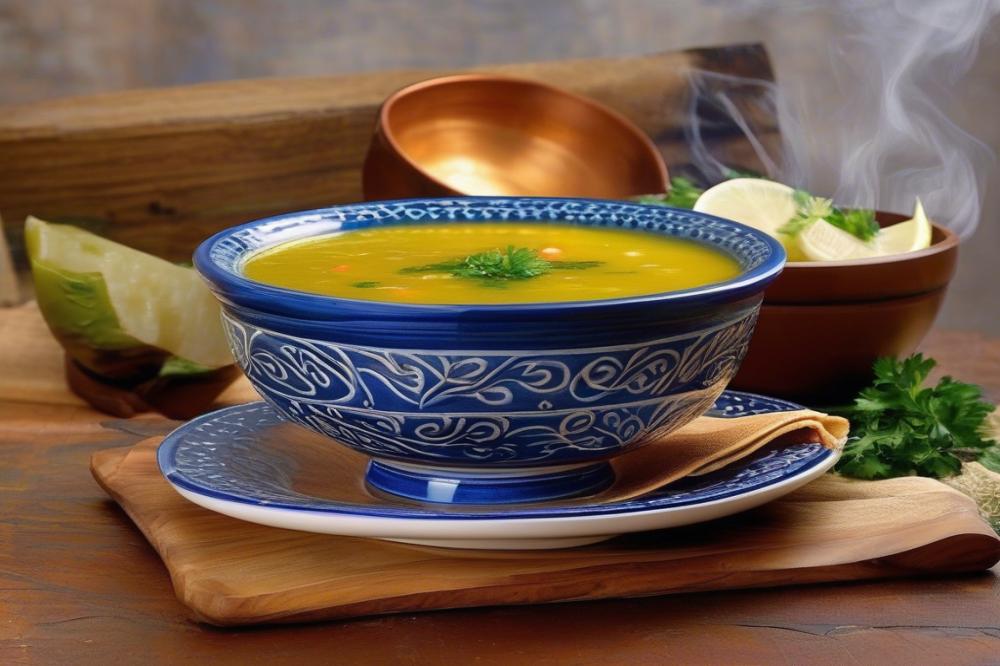
Kishk Soup brings warmth and nourishment to any occasion. It plays an important role in Lebanese meals, often shared among family and friends. This traditional recipe highlights a rich combination of flavors that appeals to many.
Pairing options make this dish even more enjoyable. Serving it alongside warm, crusty bread can enhance the experience. A side of fresh vegetables, such as cucumbers and tomatoes, adds a refreshing contrast. For those who enjoy a little heat, a dollop of chili paste can spice things up. Alternatively, a sprinkle of fresh herbs, like parsley or mint, introduces a burst of freshness.
During festive occasions, this dairy soup is a favorite. It can be found on tables during holidays like Eid or family gatherings. The kishk preparation often draws people together, creating an atmosphere of hospitality. Guests appreciate this hearty vegetarian dish for its depth and comfort.
Many healthy recipes focus on wholesome ingredients. This particular soup features fermented wheat, which contributes to its unique flavor profile. Those seeking Middle Eastern food will find that this dish stands out for its nutritional value. For a substantial meal, consider adding chickpeas. They not only enhance the flavor but also provide extra protein, making it a satisfying option.
No matter the occasion, Kishk Soup offers a comforting touch to any meal. It can be a delightful starter or even the main attraction at dinner. With its rich history and beloved taste, this soup will likely become a favorite for anyone who tries it.
The Health Benefits of Kishk Soup
Kishk Soup delivers numerous nutritional benefits. The ingredients used in this traditional recipe provide essential vitamins and minerals. At the heart of this Lebanese soup is fermented wheat. This fermentation process enhances digestion. It also fosters the growth of beneficial gut bacteria.
Dairy products in the dish, such as yogurt or milk, offer protein and calcium. These nutrients are vital for bone health and overall strength. Furthermore, chickpeas, another key component, are rich in fiber. Fiber contributes to digestive health and can aid in weight management.
Maintaining a balanced diet is achievable with meals like this. As a vegetarian dish, it serves as a delightful option for those who avoid meat. Comfort food often makes people feel good, and this soup is no exception. The warm, hearty nature of the broth provides a soothing effect.
Fermented foods, such as those found in Kishk preparation, have gained attention. Their role in promoting gut health is significant. These foods can enhance nutrient absorption while supporting immunity. Including more healthy recipes in one’s diet can lead to various health benefits. Overall, this Middle Eastern food showcases the harmony between taste and nutrition.
The Heart of Lebanese Cuisine
Kishk Soup embodies comfort and warmth in Lebanese cuisine. This dish is more than just a meal; it holds familial and cultural significance. Ingredients blend together in a harmonious way that reflects the traditions of the region. Families often gather around the table to savor this rich, creamy soup, celebrating both heritage and togetherness. Each bowl is a reminder of the stories passed down through generations.
Trying the traditional recipe at home can be a delightful experience. Cooking this dish allows you to connect with Lebanese culture in a meaningful way. The flavors of yogurt, grains, and spices create a wonderful harmony that is satisfying for both the body and soul. Your kitchen will fill with enticing aromas, drawing everyone in to enjoy a comforting bowl of this delightful Lebanese soup.
As you embark on this culinary journey, feel encouraged to share your experiences with friends and family. They will appreciate the effort, and you will create new memories around the dinner table. Embrace the chance to introduce others to a dish that signifies warmth and compassion. With each spoonful, you can feel the love and history that makes this recipe truly special.

